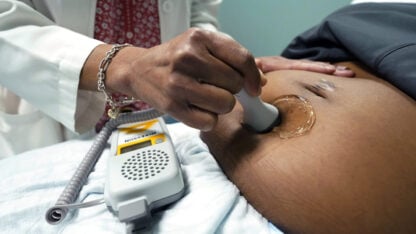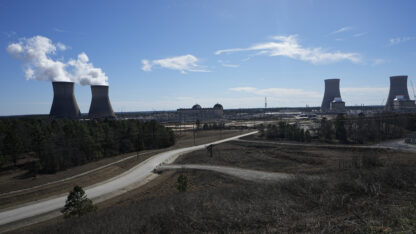Chattahoochee Named #3 Most Endangered River in US
It’s a perfect, sunny day at the Lula boat ramp in Hall County.
Jason Ulseth of the Upper Chattahoochee Riverkeeper pulls up anchor and starts the boat’s engine, bound for a small opening upstream.
He’s the Riverkeeper’s technical programs director. Today, he’s also captain.
“The name of the game is ‘Avoid the Rocks,’” Ulseth says–half smiling, fully serious.
It’s no easy task, as evidenced by his constant, schizophrenic turning of the steering wheel, which he works like he’s playing a video game.
Because the water here is so shallow, it takes a special boat–and a lot of skill– to make it through.
In some places, the water’s just four inches deep. To get through, you have to go really fast. Really fast.
Twenty minutes after setting off from the boat ramp, he brings the vessel to a stop, kills the engine, and lowers the anchor.
It doesn’t have far to travel. The boat floats in just a few feet of water.
Sally Bethea, the Riverkeepter’s Executive Director, stands and point to the bank. This is where Hall County’s proposed Glades Reservoir would be.
“It is just incredible to think someone would come up with a scheme to pump more than 100-million gallons a day out of this tiny river—water that will never get down to Lake Lanier, which we all depend on,” she says.
Bethea is one of the Glades Reservoir project’s biggest critics. She calls it a boondoggle.
It’s that proposal–along with the Bear Creek Reservoir project south of Atlanta—that’s prompted American Rivers to include the Chattahoochee as the third most endangered river on this year’s “Most Endangered” list.
“If we build these two dams, the people of Georgia will be spending close to half a billion dollars for projects that may not even yield a drop of water for 12-15 years, if even then,” says Bethea.
“These reservoirs are incredibly expensive,” adds Jenny Hoffner, American Rivers’ Water Supply Program director.
Hoffner says reservoirs in this climate aren’t feasible because they lose a lot of water to evaporation.
“Conservation and efficiency — something that’s been proven across the country and across the world as being an effective source of water supply — is a fraction of the cost,” she says.
But down the road in Gainesville, Craig Lutz sees it a bit differently. The Hall County Commissioner says the Gainesville area needs the Glades Reservoir project.
“There might be people up there who say ‘We don’t want you to drink as much as a Dixie Cup of water out of the Chattahoochee.’ But we all know that’s not reality,” he says.
What is reality, Lutz says, is that Hall County needs control over its own water supply, something it doesn’t have now.
Lutz also says the area needs a reliable water source to sustain the local poultry industry.
At between $120-and $300-million dollars, he admits the project is expensive. But Lutz is not convinced the reservoir would be a detriment to the Chattahoochee.
“I think the study being done by the Army Corps of Engineers is going to help us understand what those environmental impacts are,” he says. “But until that study is completed, frankly, I don’t know how anyone could speculate what the impact would be.”
The Army Corps of Engineers says that process will likely take many more months.
In the meantime, the Riverkeeper hopes its #3 ranking will bring more attention to the reservoir proposals, and stop them before they’re built.
http://youtu.be/qKUfP9Hy8eA
10 Most Endangered Rivers in the U.S.
- Potomac River
- Green River
- Chattahoochee River
- Missouri River
- Hoback River
- Grand River
- Skykomish River
- Crystal River
- Coal River
- Kansas River
Source: American Rivers








